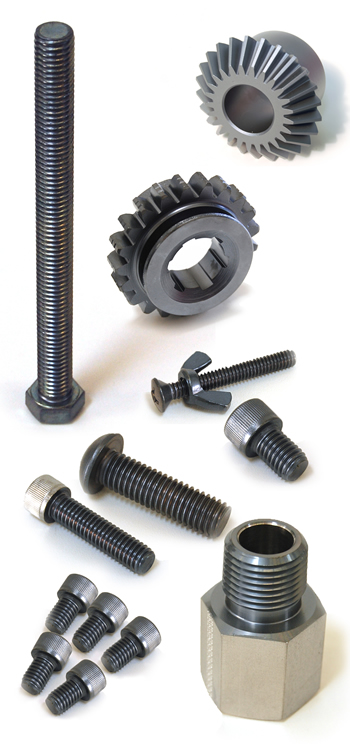
Anti-Galling with Tungstenite
Prevent Galling With The Thinnest Dry Film Lubricant
Galling is a form of surface damage arising between sliding surfaces, resulting in seizing and cold-welding. It is a common problem in fasteners, hydraulics, bearings, pistons, air motors and many other industrial operations. The key factors that contribute to galling are friction, heat, pressure and the use of similar materials during installation. Stainless steel threads are prone to seizing, particularly when matched with a stainless hole and will often cold-weld in place. Tungsten Disulfide dry film lubricant is an exceptionally effective solution to galling because it prevents heat build up by the elimination of friction: the source of heat and pressure in the installation process.
Uniform Torque
The coefficient of friction for Tungstenite is 0.035. This lessens the friction between threads and lowers the torque necessary for proper installation.
Stands the Heat
Tungsten Disulfide provides exceptional lubricity in extreme conditions. WS2 withstands temperatures up to 1200° F
Cool Under Pressure
Tungsten Disulfide resists pressure/load capacity up to 100,000 psi or the same as the substrate.
Uniquely Thin
0.5 microns thick properly impinged Tungsten Disulfide is dimensionally insignificant. No extra tolerances need to be considered unlike MoS2 or PTFE
No Interference
Tungsten Disulfide is chemically inert, non-toxic, non-migrating, liquid oxygen compatible with minimal outgassing.
WS2 Technical Information
Composition:
A single layer of modified Tungsten Disulfide .5 microns thick
Molecular weight of 248.02
Density of 7.4 gms/cc
Hardness of 30 Rockwell C
Non-magnetic
Uniform silver-gray in color
Substrates:
All ferrous and non-ferrous metals and selective manmade solids and plastics.
However, the harder the substrate, the better the bond.
Adhesion:
High velocity impingement applied at ambient air temperature.
No cure time required
No binders or additional adhesives
Temperatures Range:
-460°F to 1200°F (-273°C to 650°C) in normal atmosphere
-360°F to 2400°F (-188°C to 1316°C) in hard vacuum
Load Capacity/Pressure:
Same as substrate to 100,000 psi
Coefficient of Friction:
Dynamic 0.035 Static 0.07
Coefficients lower then .05 are attainable but will vary with humidity
Chemical Stability:
Inert, non-toxic and non-corrosive
Accepts petrochemical oils and greases, synthetic oils, silicone lubricants and hydraulic fluids.
Does not prevent corrosion of substrate
Lox Compatibility:
Insensitive to detonation by or in the presence of oxygen
